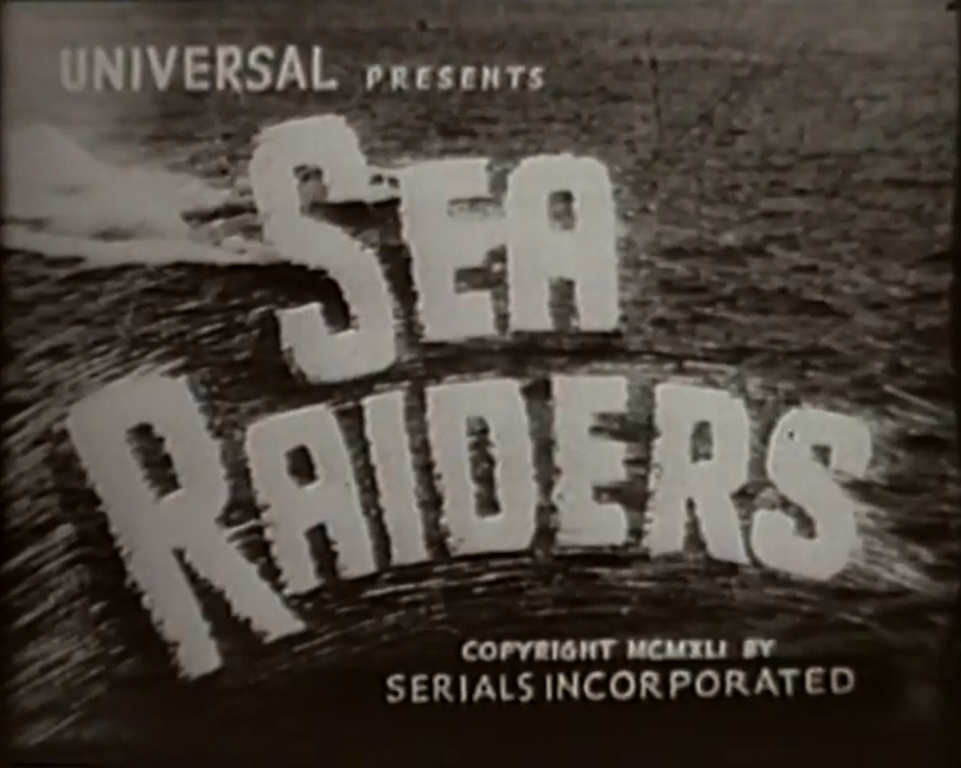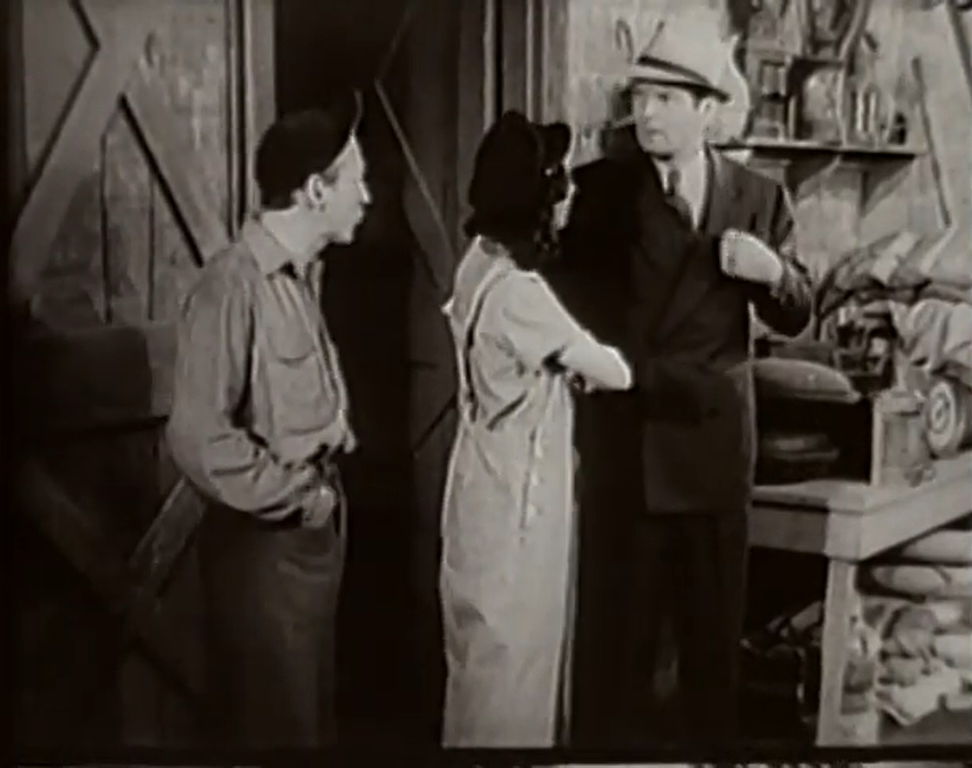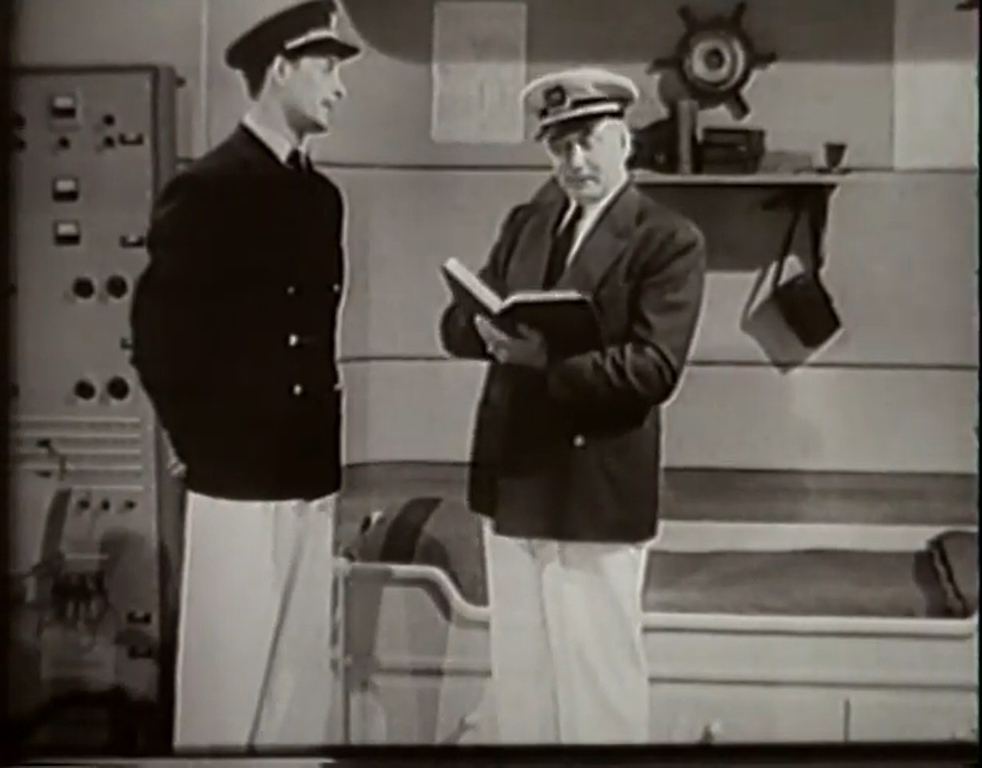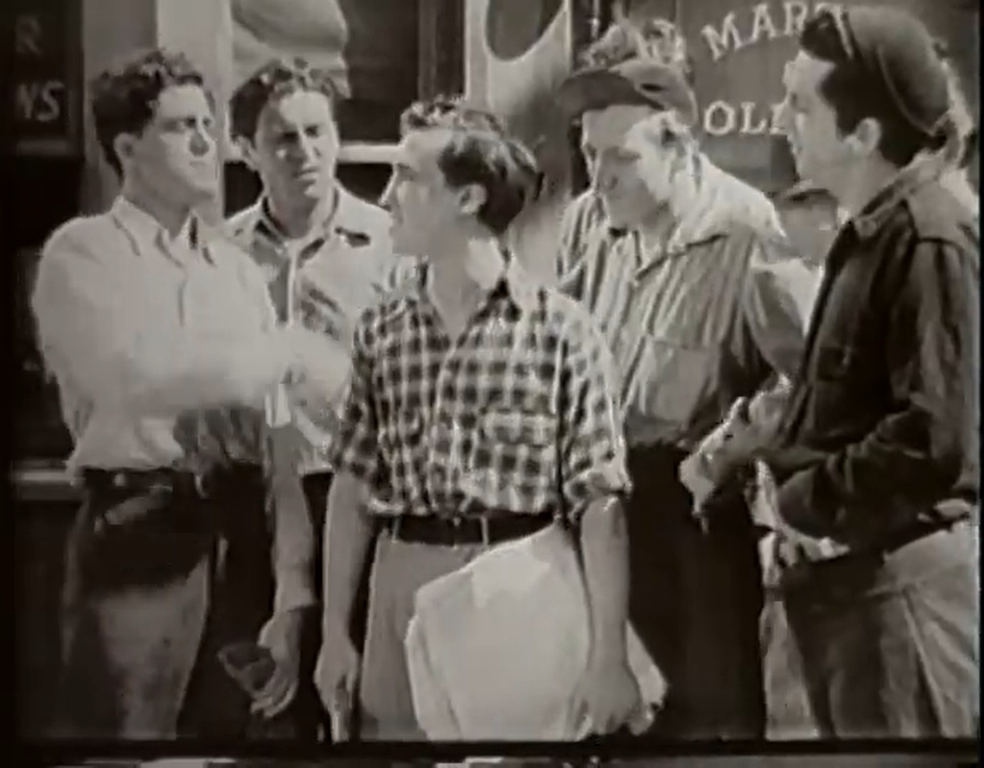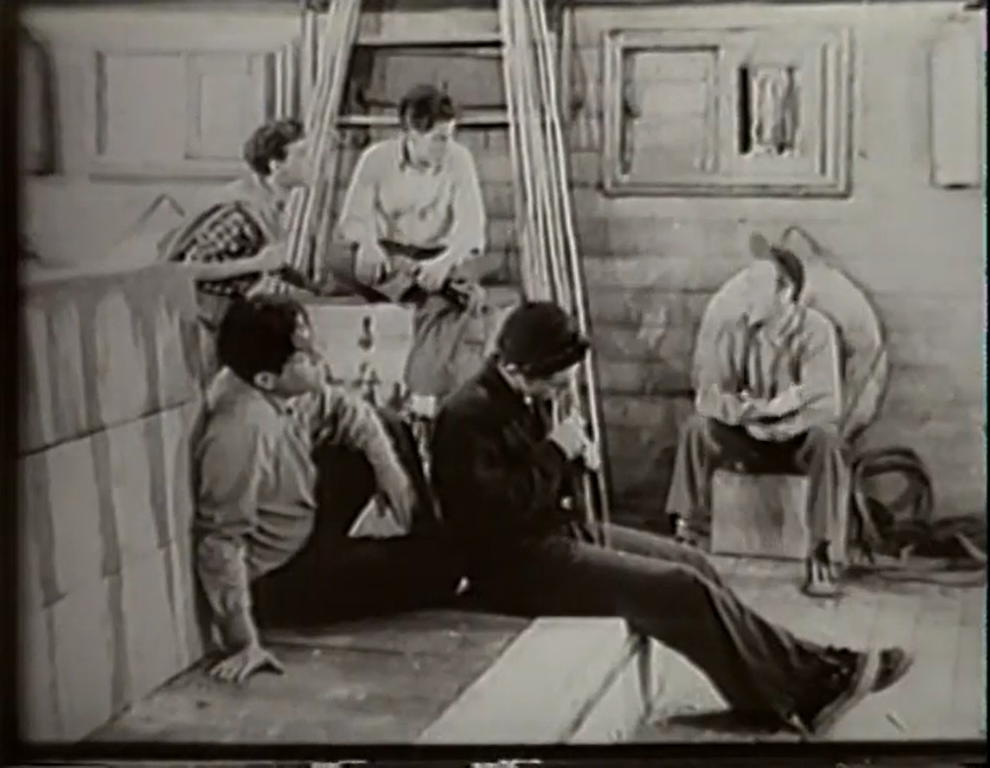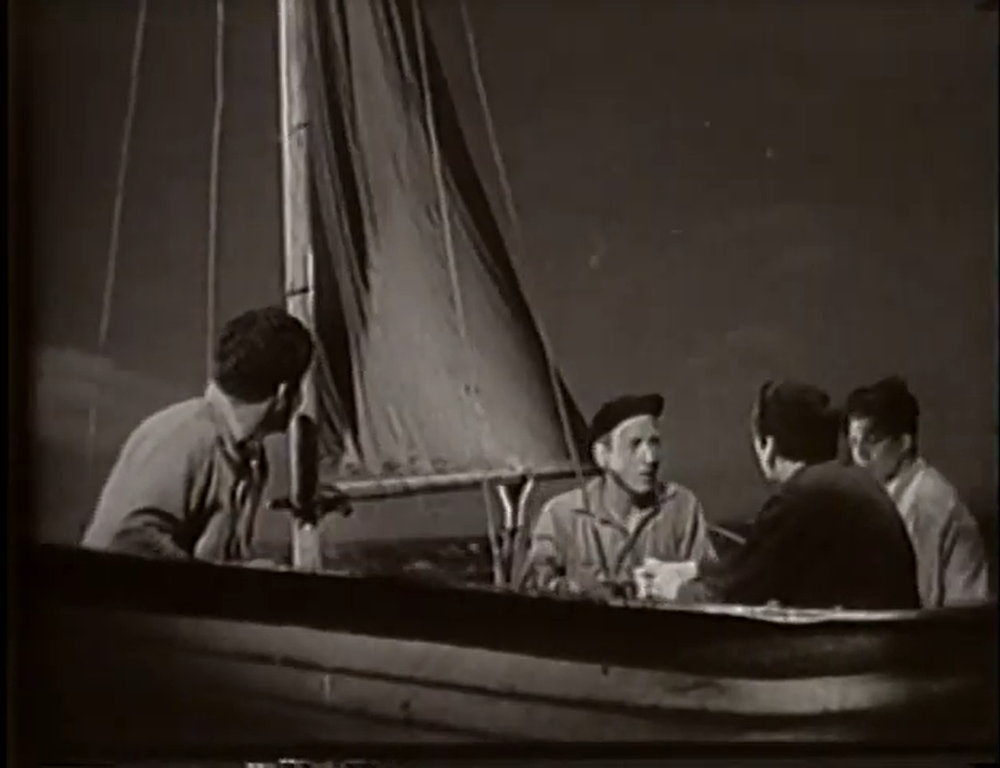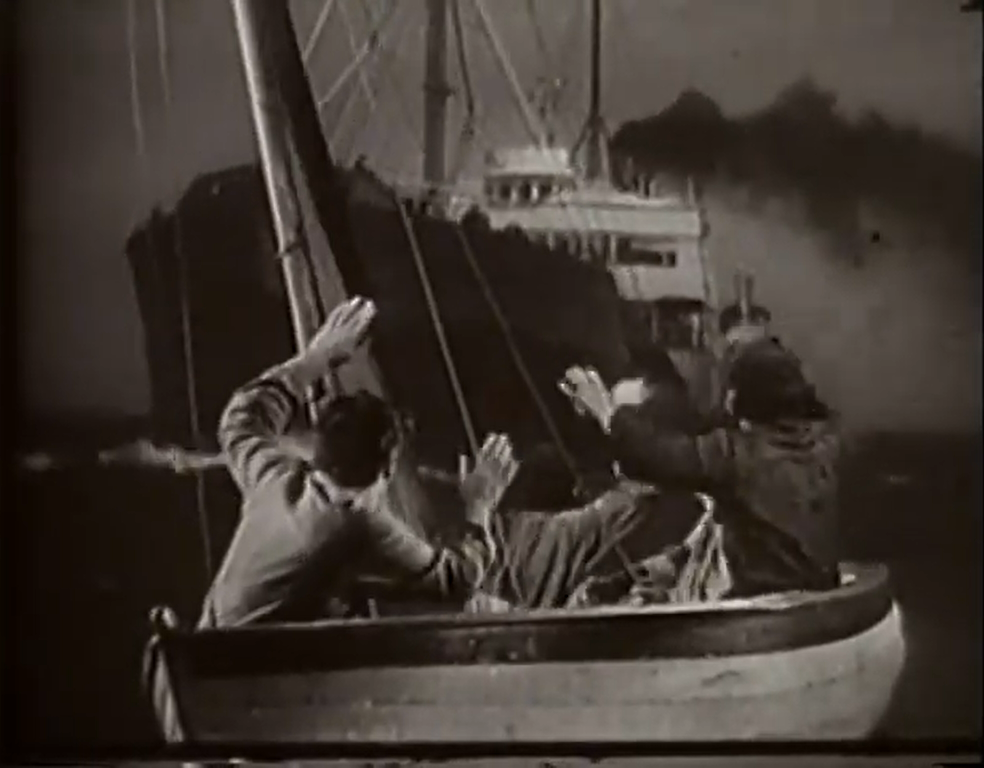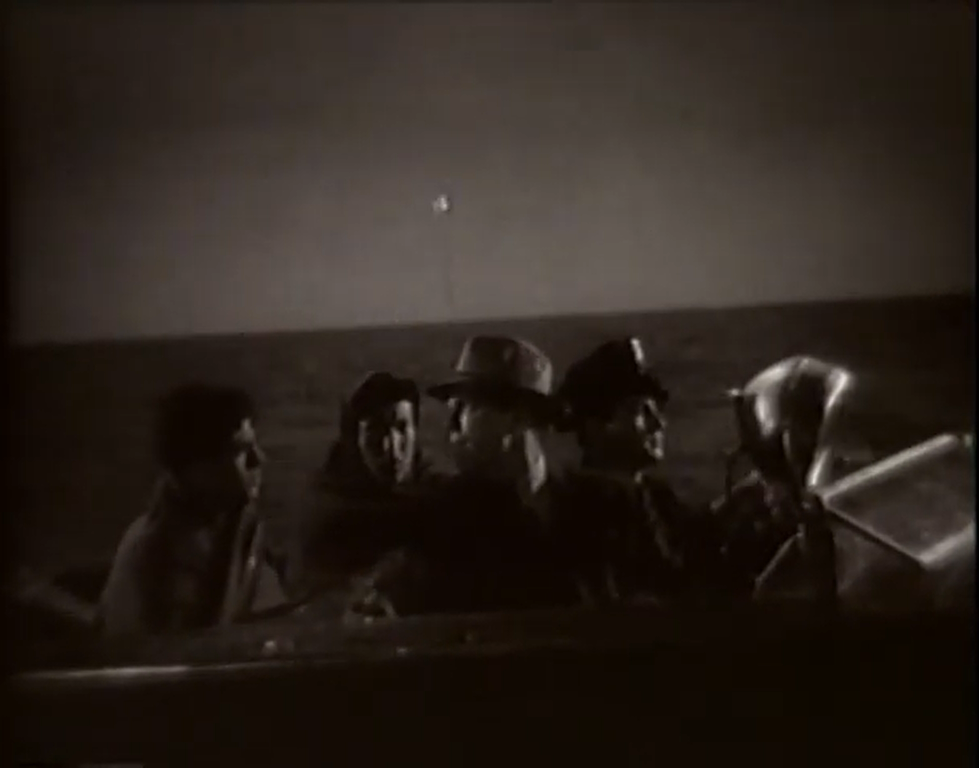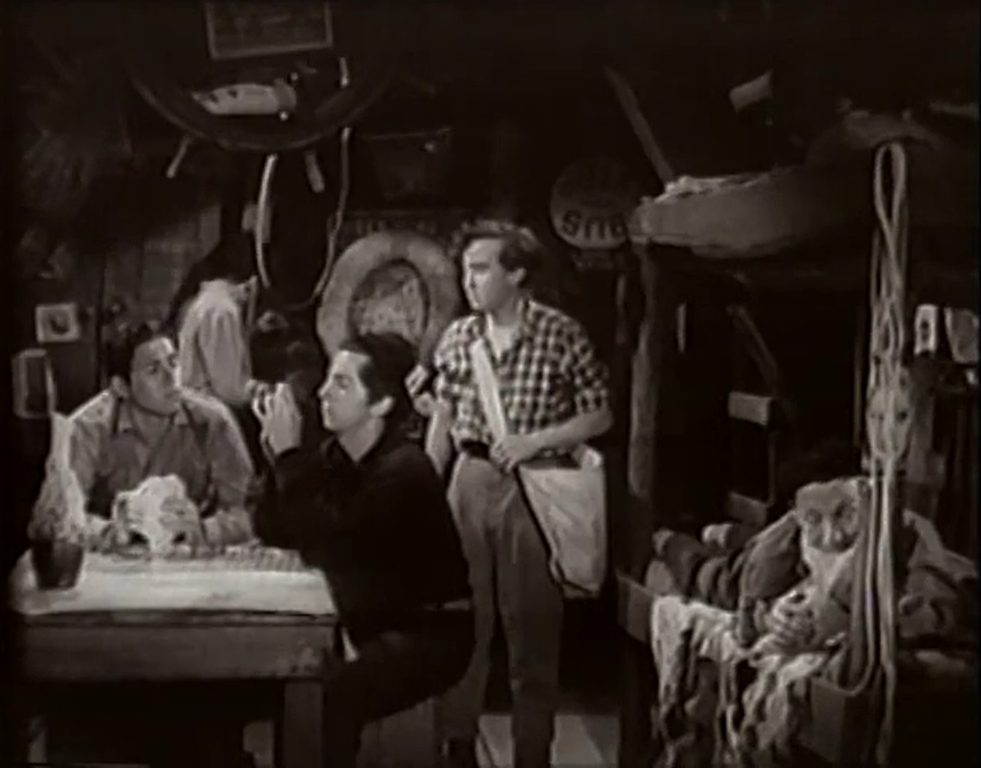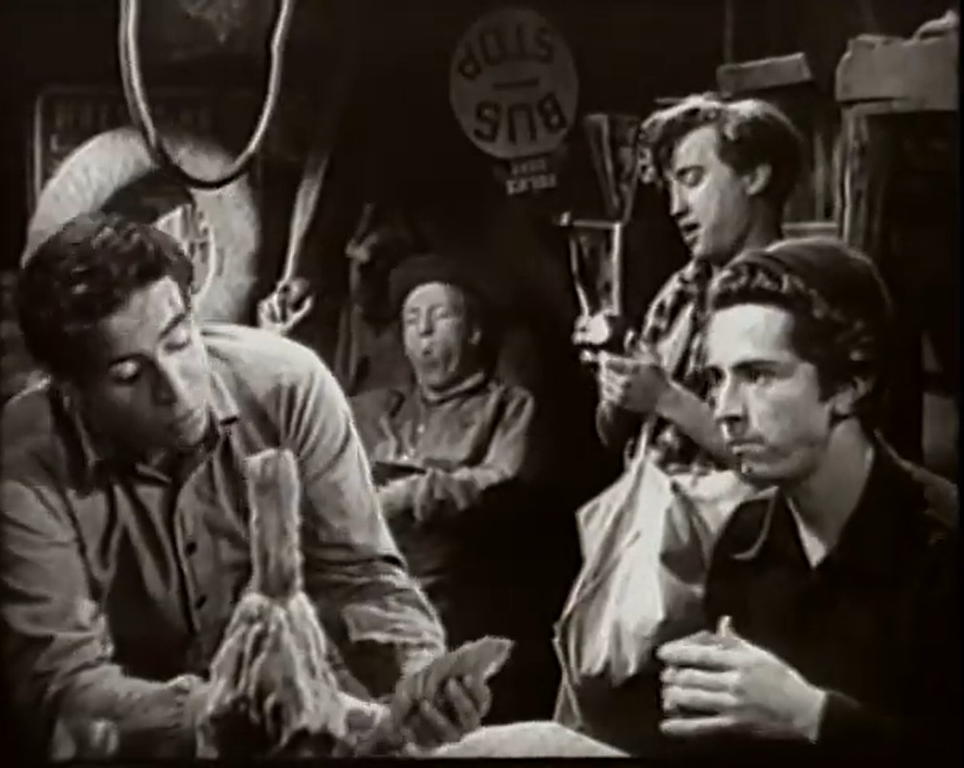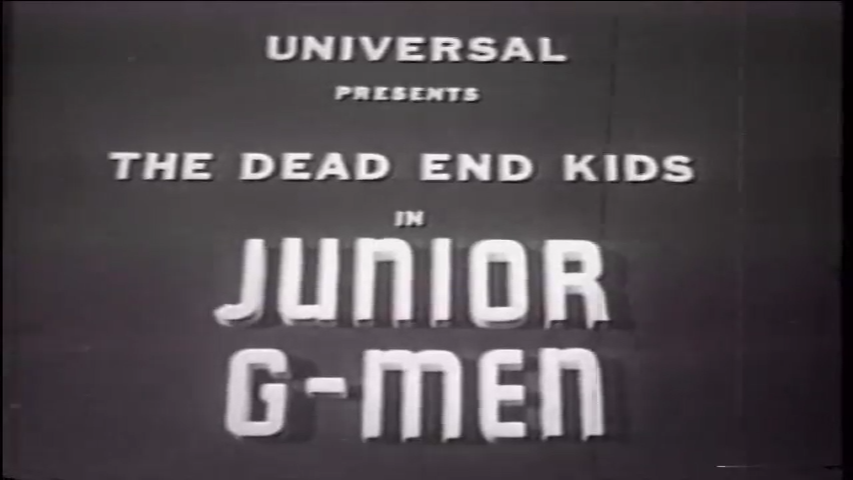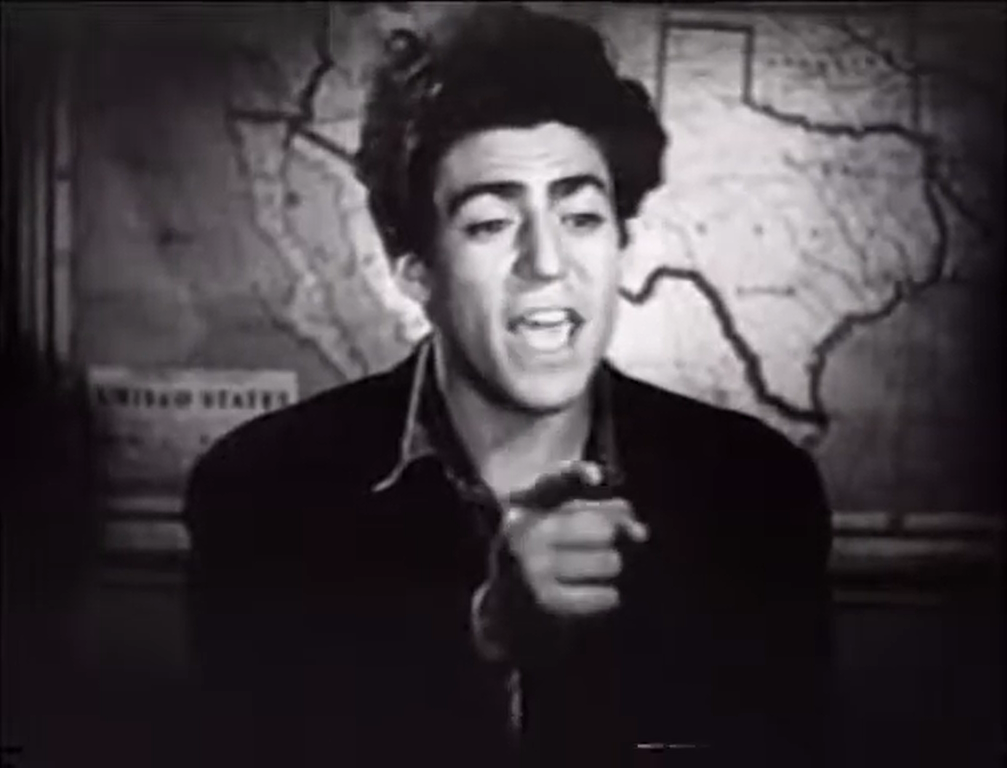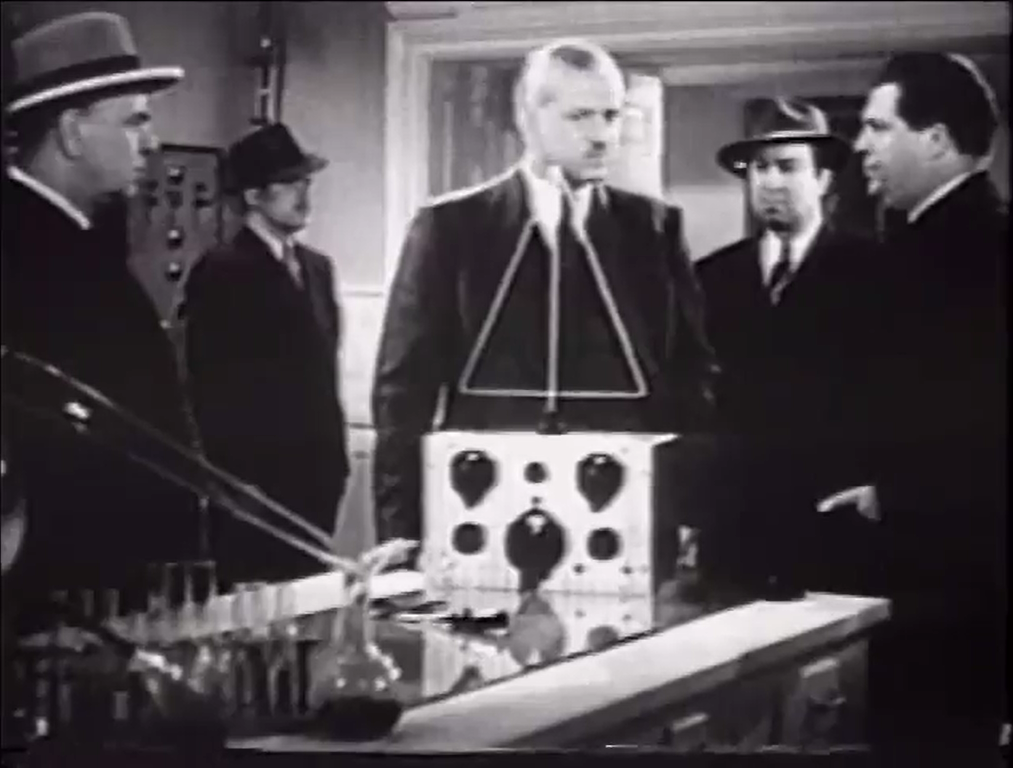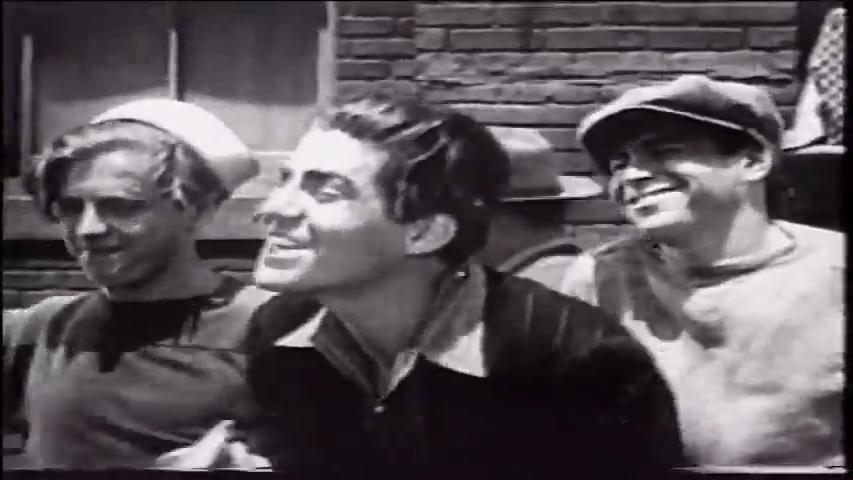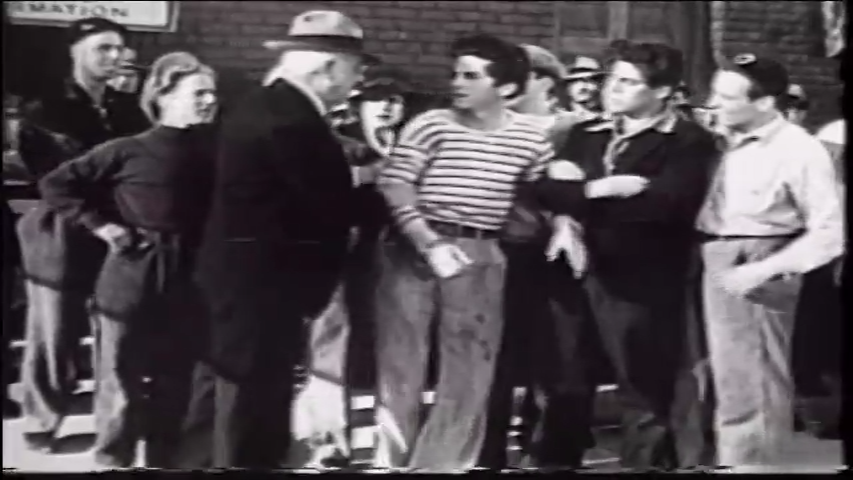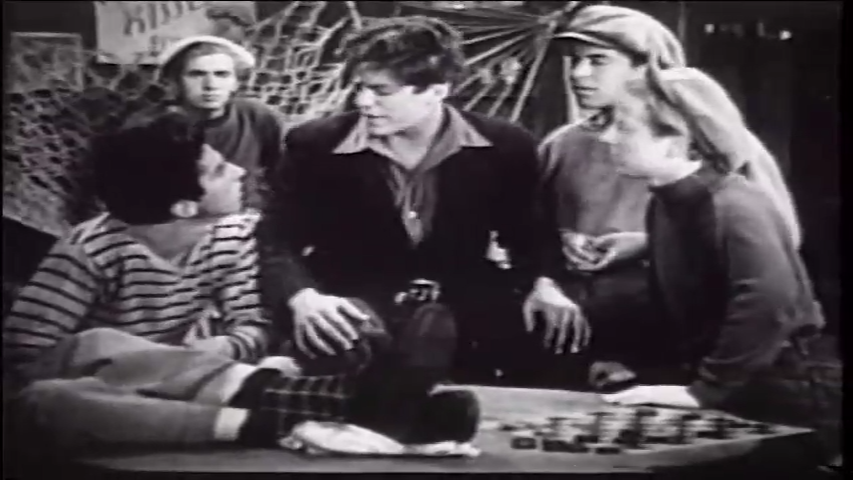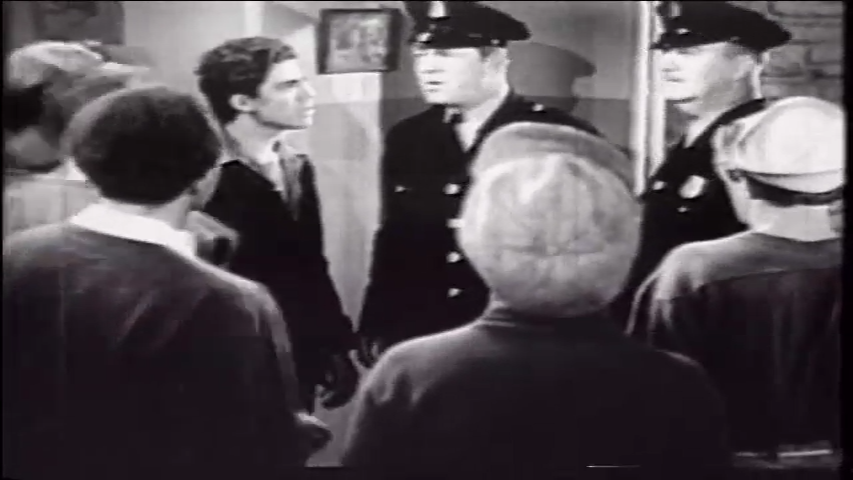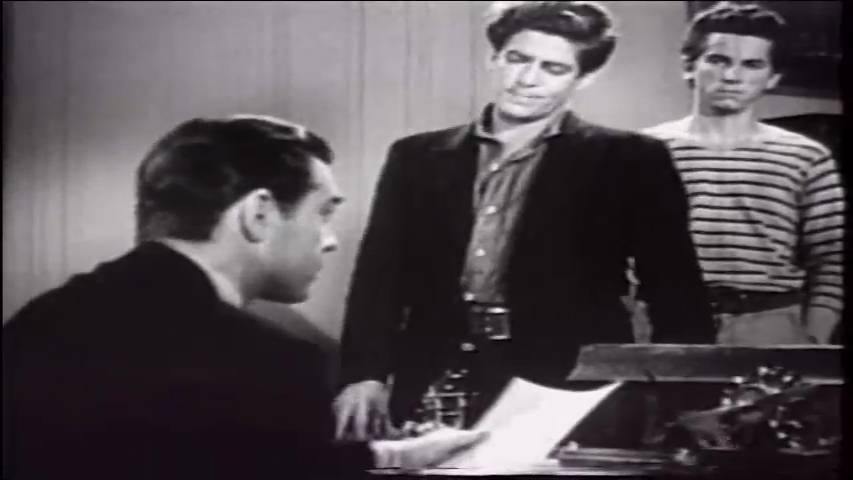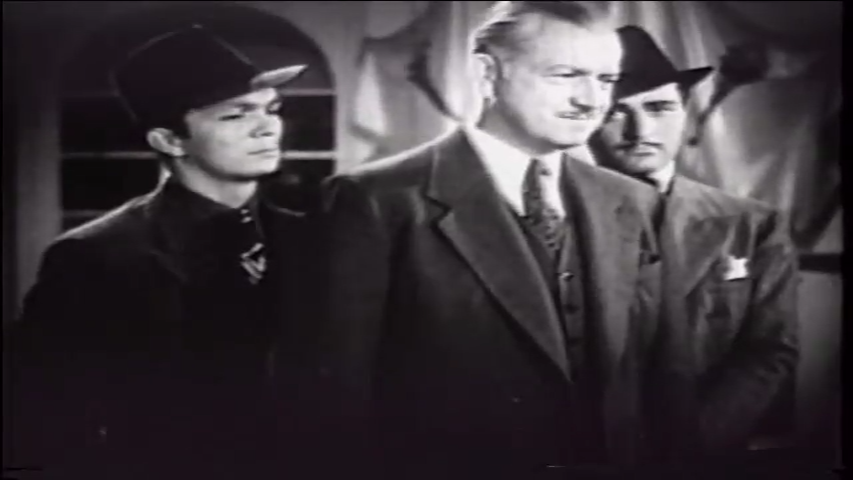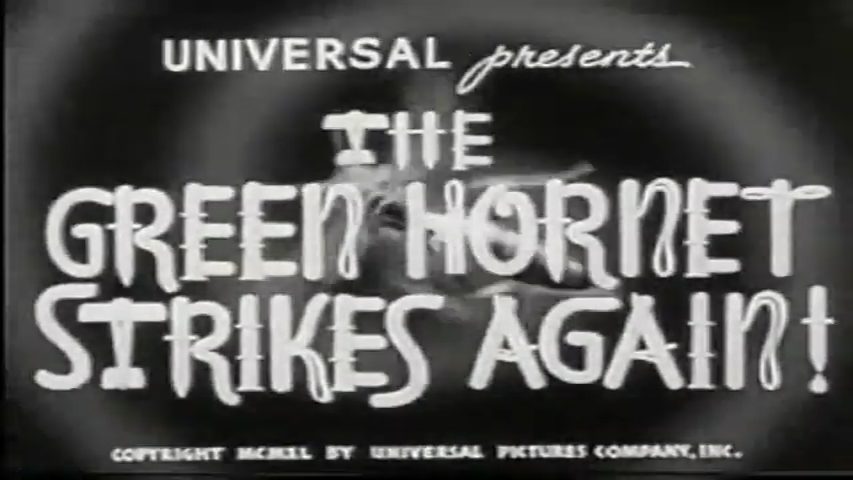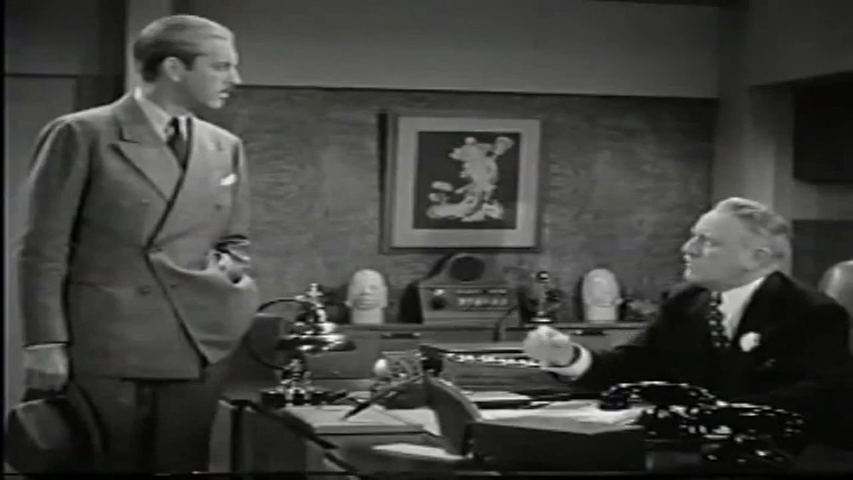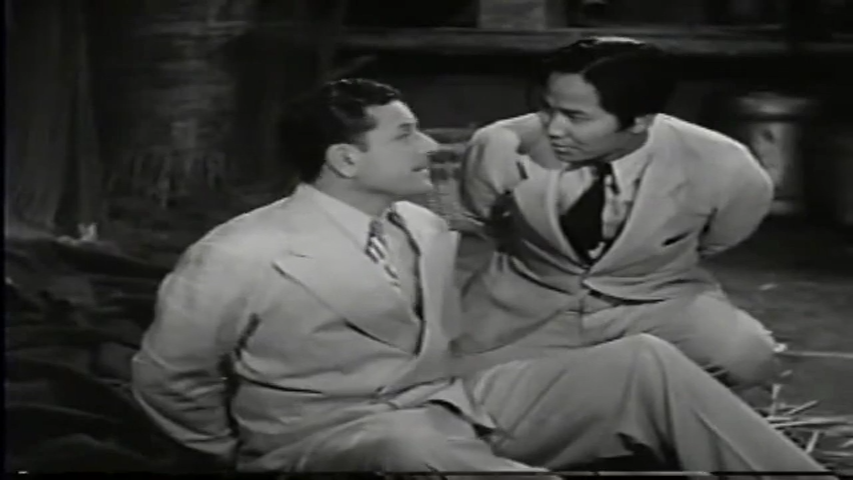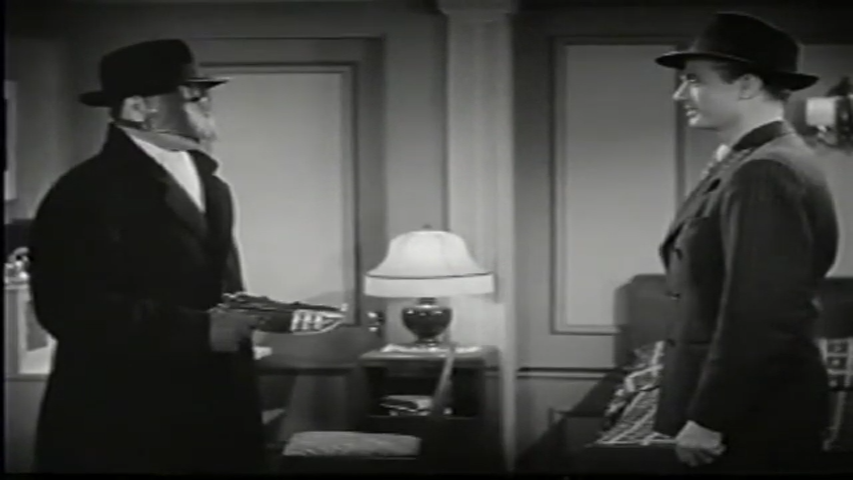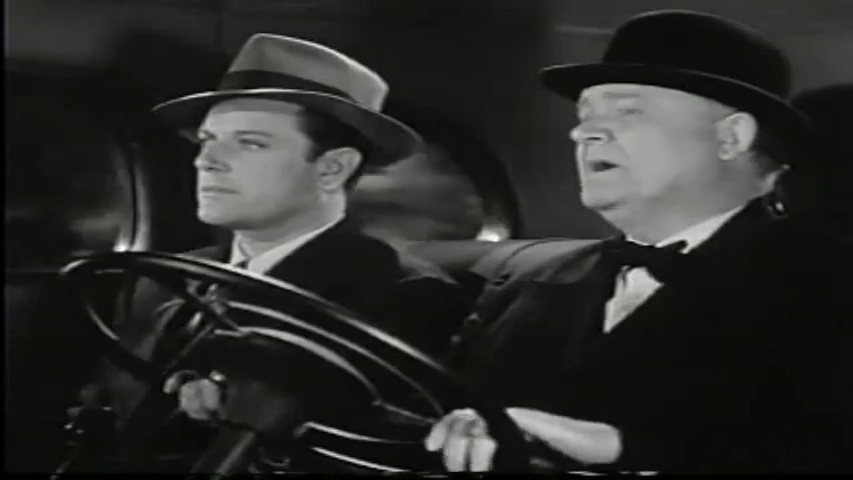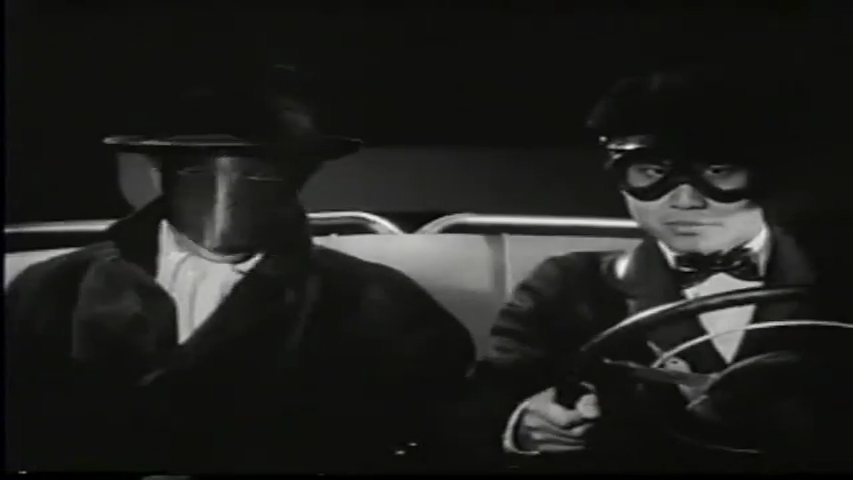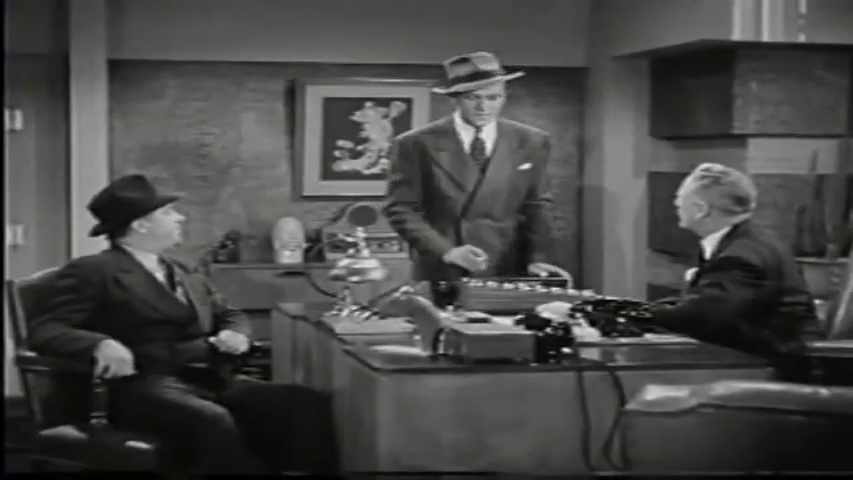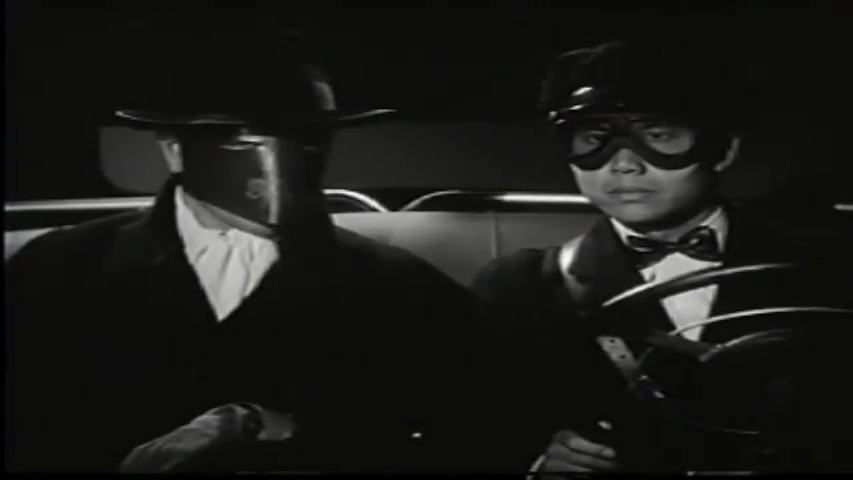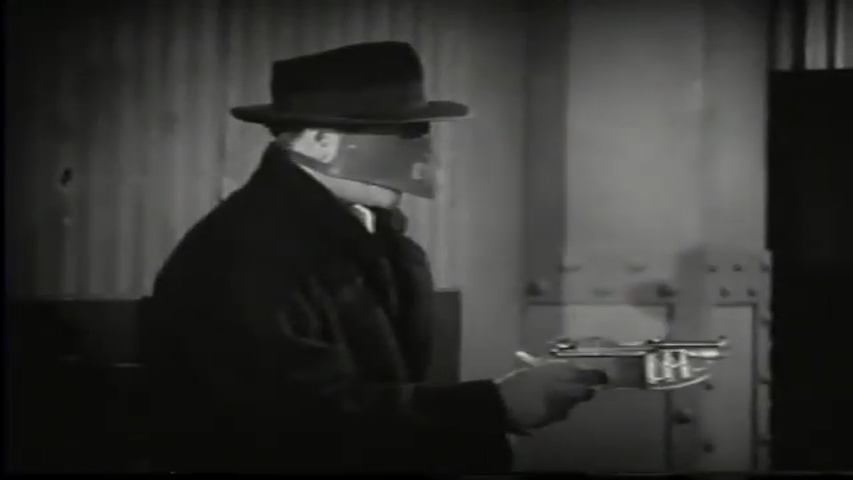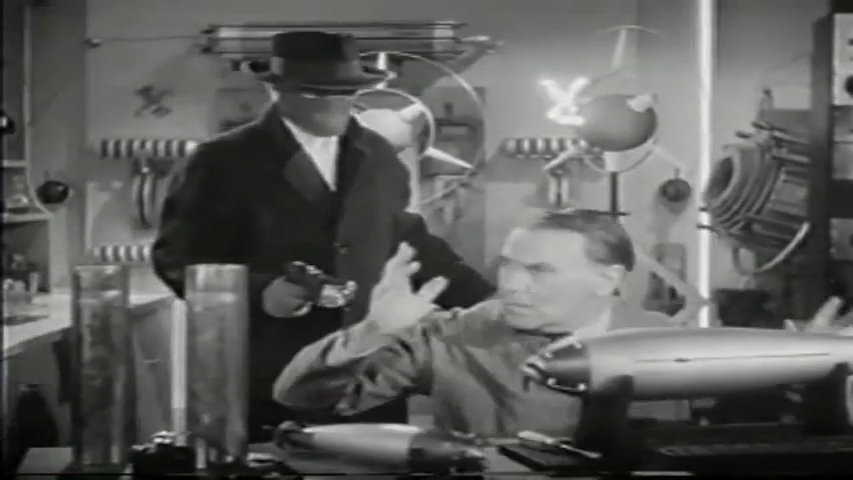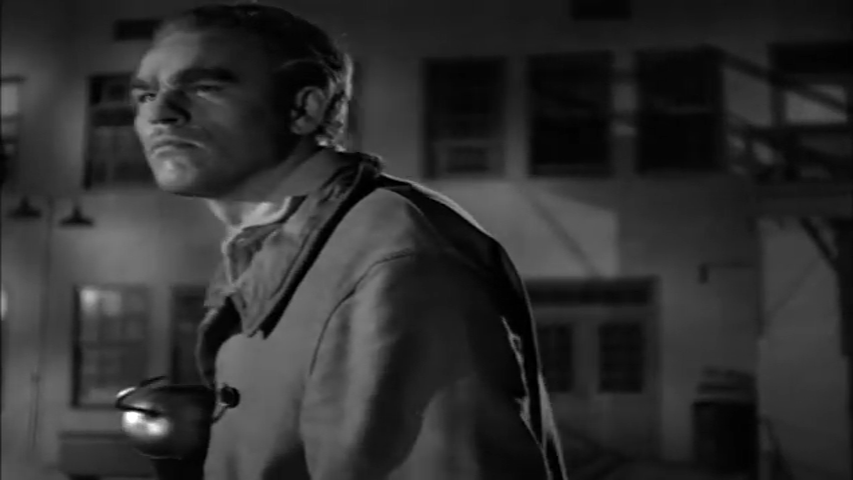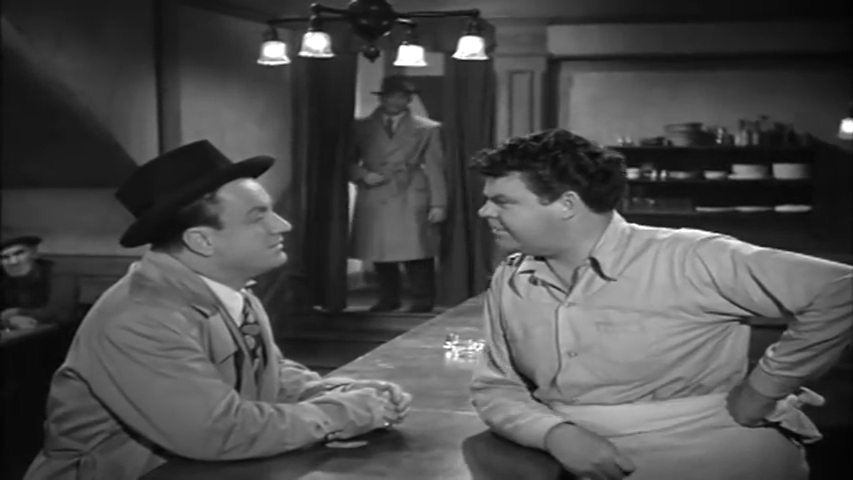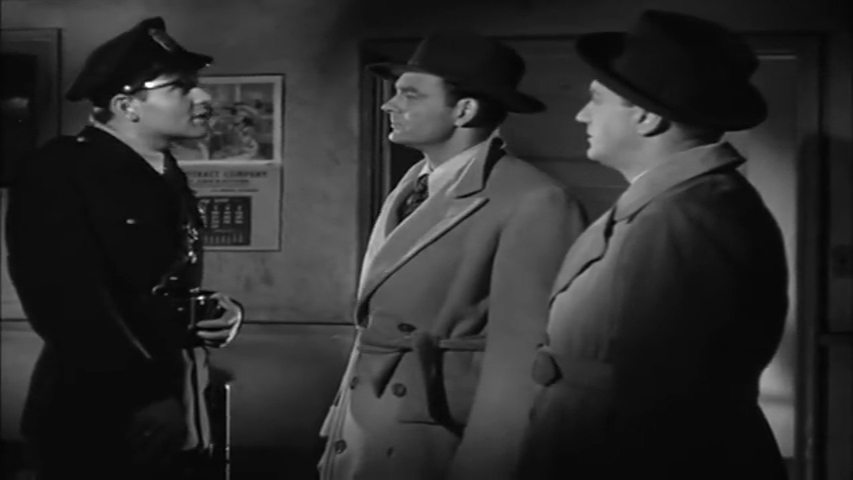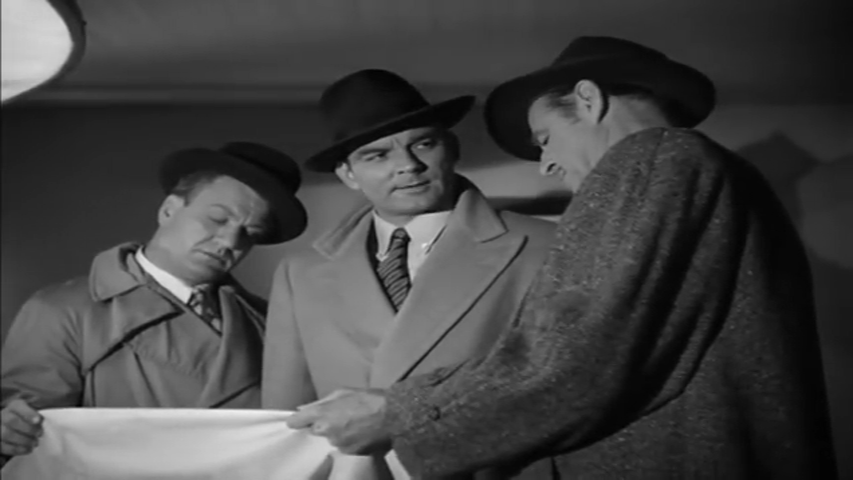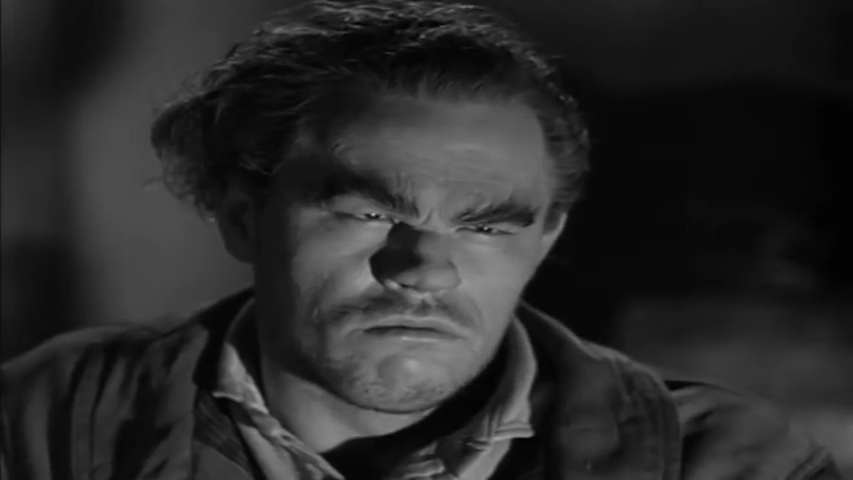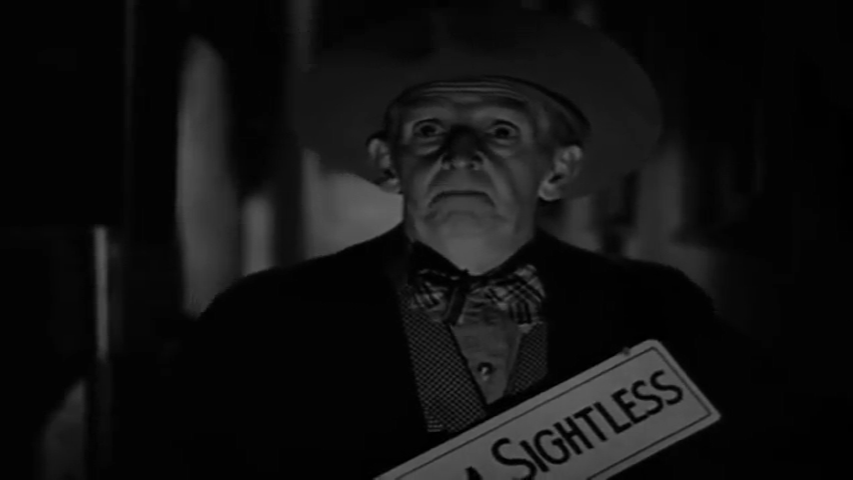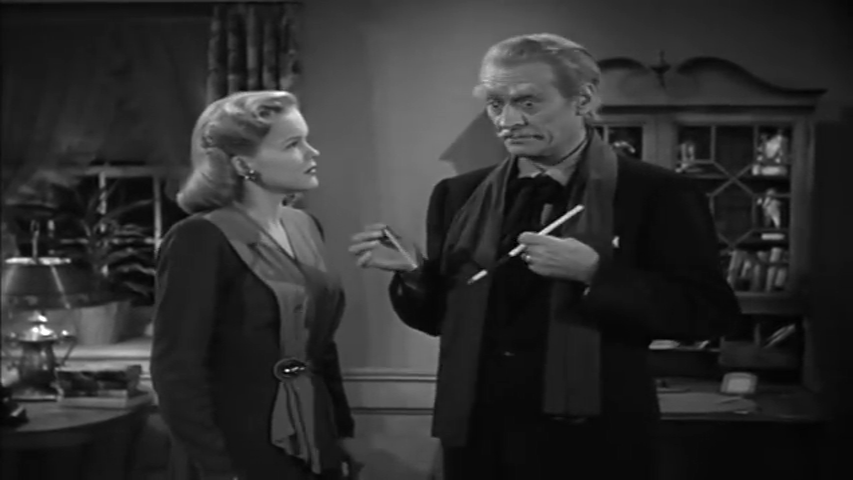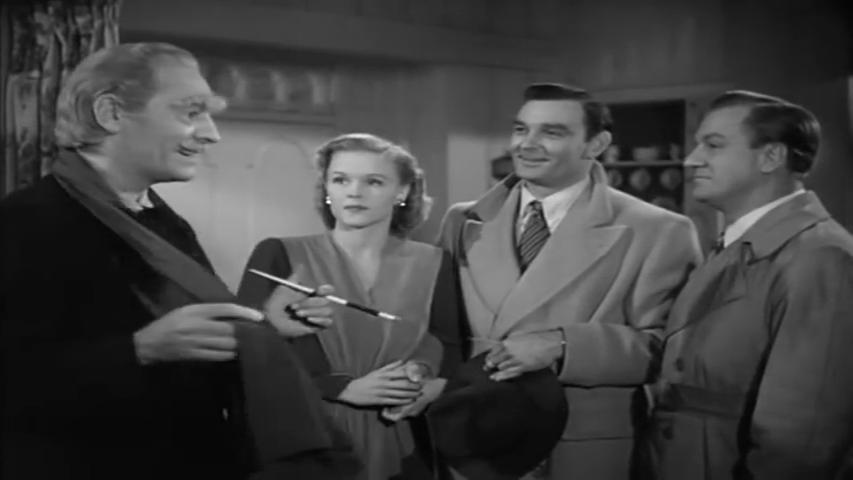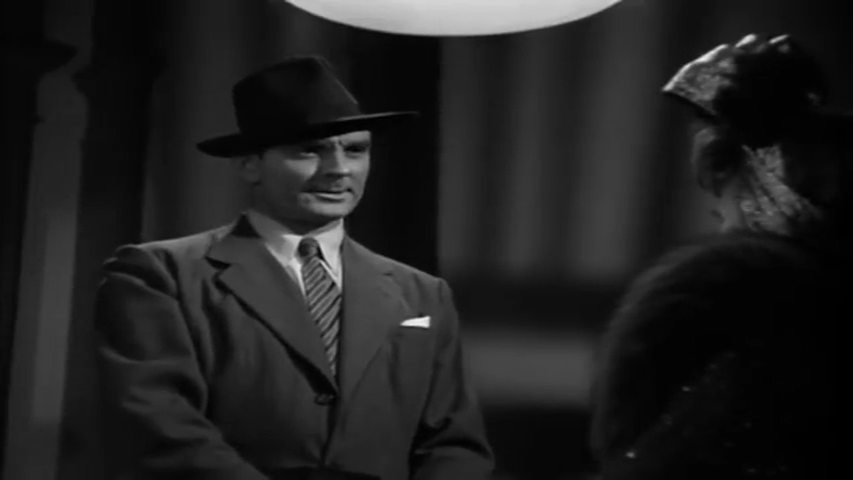-
#415 – Sea Raiders (1941)
Sea Raiders (1941)
Film review #415
Directors: Ford Beebe, John Rawlins
SYNOPSIS: A gang of kids living by the harbour get wrapped up in a nefarious plot by a foreign agent to steal a new “torpedo boat” that is to be sold to the American government. The boat has been invented by Adam, who is Billy’s older, who is also the leader of the gang. When the plans for the boat are stolen, a local G-man named Brack Warren believes the kids are to blame, and tries to hunt them down. Billy decides that the only way to clear their name is to try and find who stole the plans and get them back before they are captured and Brack sends the kids to the desert…
THOUGHTS/ANALYSIS: Sea Raiders is a 1941 movie serial and the second universal serial featuring the group(s) of young actors known as the “Dead End Kids” and the “Little Tough Guys.” Junior G-men, the first serial was released the previous year. The story centres – as the title suggests – around the sea, where an unknown assailant termed the “Sea Raider” has been destroying ships carrying wartime supplies to America’s allies in Europe. Billy and his gang of street kids are causing trouble and trying to avoid getting caught by local officer Brack Warren, who wants to ship them off to the desert. Billy’s brother Tom has been developing a new torpedo boat that be sold to the government and shipped to its allies, but little does he know his friend Captain Carlton is secretly working with a foreign agent to steal the boat for his own country. When Tom’s workshop is broken into and his blueprints are stolen, Warren suspects Billy’s gang is behind the theft, and they decide to prove their innocence by tracking down the real thieves. The story is fairly similar to the usual serial format, but like its predecessor, deviates somewhat by having the lead characters not be a square-jawed, cowboy-esque white male, but instead this gang of rogue, slang-talking kids who constantly cause trouble. and rebel against authority. The plot flows nicely, and although it falls into some typical tropes of the format, it switches up the locations and perils enough to keep things interesting.
The kid characters, as mentioned, do eschew the typical lead roles, but their characters are almost identical to the ones they played in Junior G-Men. The young actors only play this very specific role though, but it is confusing that this isn’t a direct sequel, and even more so that the lead kid Billy is again playing a character named Billy (whose real name is also Billy). A lot of what I said about the characters from my review of the previous film featuring them still stands: the characters initially come across as rather unlikable, in that they are constantly causing trouble and stealing from people. It’s a bit more toned down in this film though, and their relatives dismiss their antics as mostly harmless. A lot of their antics are also directed at Brack Warren, a local police officer, who provides more of a comic relief role in his inability to apprehend the kids and his general incompetence, so the kid’s actions don’t seem so bad. Other than the main cast, the supporting cast are more in line with a typical serial, with a villain that is pretending to be the heroes friends, backed by a foreign agent (although the name of his country is not mentioned, he is obviously German). The theme of the serial around bewaring foreign spies and standing up for your country are typical of wartime serials, and like its predecessor, this one is perhaps aimed at younger viewers who like the kids in the serial are troublemakers, but can still support their country.
There aren’t too may serials with a focus on the sea, so that makes the serial stand out a bit more (The only other one I have seen is S.O.S. Coast Guard). This setting brings with it a lot of chases on the sea and even fights with sharks and an octopus. The camerawork is fairly decent, and the shots at sea are well done and convincing for the time. On the negative side, I noticed that the twelve chapters are a little shorter than usual. Given that the beginning of the chapter is a text-scrolling recap of the previous chapter, then there is playing the end of the previous chapter for the cliffhanger and it’s resolution, you are basically getting less than fifteen minutes per chapter, which if you’re going to the theatre every week seems like a bit of effort for little in return. On the other hand though, this means that the chapters are quick and fast-paced, so you’re not bored with scenes of pointless dialogue of characters explaining the plan they’re about to execute. Like it’s predecessor, Sea Raiders offers something a little different in the format: not too much, but enough. The story is familiar, but well-paced, and the action sequences are well done. The lead kids are a little erratic and difficult to root for when they act in their spiteful and rough manner, but they settle into the role of heroes well enough when confronting the real villains. Similar to Junior G-men, it’s worth a watch if you’re a fan of the format (although it doesn’t really work as a format nowadays), and would have been entertaining back when it was released too, I imagine.
-
#414 – Junior G-men (1940)
Junior G-Men (1940)
Film review #414
Directors: Ford Beebe, John Rawlins
SYNOPSIS: A group of street-wise kids led by Billy Barton are caught up in the deadly scheme of the “Order of the Flaming Torch” to sabotage and disrupt the government with the help of foreign agents to replace the government with their own men. F.B.I. agent Jim Bradford wants Billy’s assistance in locating his Father Colonel Robert Barton, who Billy hasn’t seen for five years, and who Brad ford believes is being held hostage by the Order. Billy and his gang are reluctant to help out any authority figures, and Bradford suggests they join up with his nephew Harry Trent, who is leading a group of junior G-men in town to aid the investigation…
THOUGHTS/ANALYSIS: Junior G-Men is a 1940 movie serial and the first of three starring the group of young actors referred to as the “Dead End Kids” and the “Little Tough Guys,” who starred in a number of films together. The serial starts off showing the gang of kids going round town being general nuisances. In the first few minutes, we see them steal, cause a car chase, start a fight, and generally just create chaos in their neighbourhood. From the start, these kids are not very likeable with their flagrant disregard for anyone else’s wellbeing but their own, and their constant hostility to any kind of law enforcement. An F.B.I. G-man named Jim Bradford questions Billy Barton, the leader of the boys, about the disappearance of his Father, and asks for Billy’s co-operation to find him. Again, the kids are aggressive and hostile about helping any “copper,” and leave. Jim Bradford suggests his nephew Harry Trent, a junior G-man, attempts to train the boys to take on the Order with them instead. Billy and the boys are initially hostile to this as well, but gradually start to work together with them to take down the “Order of the Flaming Torch” who have kidnapped Billy’s Father. The serial clears the antagonism between the characters eventually and it settles down into the usual hi-jinks of chases and fistfights that are expected of the format. The street kids also get to learn about the different techniques that the g-men use to investigate crimes, which leads to a blend of the street-wise and the methodical that works well.
The cast of characters are somewhat different to what you usually get in these serials. Billy Barton and the street-wise kids are certainly a contrast to the square-jawed, cowboy-esque men that are typically the stars of these serials as portraying a typical all-American heroism. Instead, Billy and his gang are rough-looking, unkempt and hostile to the law. The theme of the serial is, like many of the serials of the time, centred around the theme of spies, sabotage, and “bewaring the enemy within.” Billy and the gang are persuaded to put aside their contempt of the law for the sake of patriotism and their country. I think perhaps this serial was aimed at the rebellious younger generation in order to convince them to do the same thing in war-time as when this serial was released in 1941. Other than Billy, most of the other kids don’t get much screentime or dialogue apart from Lug, who provides the comic relief. Jim Bradford provides the more typical hero role that you usually see in these serials. Harry Trent as the junior G-man who is around the same age as the kids provides a good counter-act to Billy, and watching the two learn to work together gives the serial a good flow and sense of development as the serial unfolds. The villains are nothing special, but their interactions with their hostage Robert Barton (Billy’s Father), who is constantly trying to outwit them and escape, provides a source of ongoing tension. Outside of these characters, there’s nothing else worth mentioning; there isn’t even a single female character in the roster, other than Bradford’s secretary, who has maybe two or three lines.
Overall, Junior G-men is something a little different in the format, which is a rare thing. The main characters are not the typical heroes; they are rude, aggressive and at the beginning very unlikable. As the serial goes on, it settles into a more traditional flow as the kids ally themselves with the G-men. There’s enough going on at all times to maintain interest for the viewer, and a mix of different situations across the fairly large cast means the story moves along across all these characters equally well. On the negative side, as mentioned the kids are in the beginning rather unlikeable, but they do settle into the role later on. Also the action is a little crowded and uncoordinated, as sometimes the whole gang of kids get involves in a fight which makes it difficult to keep track of. The action scenes and cliff-hangers are nothing spectacular, but overall it’s nice to see something a little different from this format.
-
#396 – The Green Hornet Strikes Again! (1940)
The Green Hornet Strikes Again! (1940)
Film review #396
Directors: Ford Beebe, John Rawlins
SYNOPSIS: The Green Hornet, a masked vigilante is once again on the case of a racketeering ring that is terrorising the city and undermining the country’s military productions. Britt Reid, the owner of The Sentinel newspaper, investigates these racketeering rings, and disguised as the Green Hornet puts a stop to their operations, all the while having to avoid his secret identity being uncovered by his friends and co-workers…
THOUGHTS/ANALYSIS: The Green Hornet Strikes Again! is a 1940 movie serial based on the The Green Hornet radio drama and a sequel to the movie serial of the same name. The story once again centres around Britt Reid, the owner of The Sentinel newspaper, who is also secretly the masked vigilante “The Green Hornet.” While Reid investigates the crime rackets in the city at the newspaper, as The Green Hornet he puts a stop to them with the information he has received through his investigations. This only really needs to be a short review, as most of what can be said about this serial was already said in my review of its predecessor. The story is very similar with The Green Hornet once again going after racketeering operations, with a new one being the focus of nearly every episode, which means there’s a bit of variety to the plot. This does make the serial stand out from others in the format since most of them have once overarching plot, linking the chapters by cliffhanger endings which are directly resolved at the beginning of the next chapter. Although The Green Hornet Strikes Again! somewhat does this, the cliffhangers don’t have a similar impact, and mostly just wrap things up before moving on to a new story. The overarching plot concerning the crime syndicate is a bit more substantial than the previous serial, with an overall villain controlling things, but it’s not a massive change. Nevertheless, there’s plenty of action with The Green Hornet, and intrigue with Reid’s investigations, so it manages to switch things up to keep them interesting. It should also be noted that is one of the longest serials, clocking in at nearly five hours and fifteen chapters, so that variety comes in handy.
Being released less than a year after the original, this sequel manages to return all the sets and cast as if it was almost a direct continuation. Everyone has a specific role to play, from the heroic Reid, his driver Kato, Michael Axford being the comic relief, and so on. The acting isn’t too bad, but again like its predecessor, the dialogue feels very stiff and unnatural at some points, like the actors are just reciting lines without any natural pacing or emotion. The movie serial format is known for sticking to the tropes of its format, and The Green Hornet Strikes Back! is no exception. However, it is sticking to the formula of its predecessor, which deviated from the format in having more stand-alone episodes rather than dragging out one overarching story. With this in mind it is still a good example of the format, with interesting characters, good action and intriguing investigations that have a decent amount of entertainment value.
-
#395 – Dick Tracy’s Dilemma (1947)
Dick Tracy’s Dilemma (1947)
Film review #395
Director: John Rawlins
SYNOPSIS: A robbery at a vault full of furs also leaves one person dead and a suspicious insurance claim. Homicide detective Dick Tracy and his partner Pat Patton are put on the case where they investigate the involvement of a man known only as “the Claw”…
THOUGHTS/ANALYSIS: Dick Tracy’s Dilemma is a 1947 film and the third Dick Tracy feature film. The film opens up with a robbery being committed on a safe at a storage facility. The watchman attempts to intervene, but later when it is found that he is missing, homicide detective Dick Tracy and his partner Pat Patton are put on the case and find the safe, which was supposed to be full of imported furs, empty. Tracy investigates the involvement of the vault’s insurance company, as well as the involvement of a man known only as “The Claw”. The story is very similar to the other two films of the series, with a murder investigation being the primary thread running through the film, with lots of little investigations and twists tying into it. The runtime of sixty minutes is again similar to its predecessors, which keeps everything streamlined and without unnecessary filler. It is well paced with a variety of locations and colourful characters to keep things interesting.
The most notable element of this film compared to the others is the return of Ralph Byrd to the role of Dick Tracy in place of Morgan Conway from the first two. Byrd starred as Tracy in the four movie serials released between 1941 and 1947, and his return is very much welcome. While Conway probably looked more like the Dick Tracy from the comics, Byrd has a much more likeable charm and personality, and just seems to fit in better with the other cast members. The rest of the cast also has plenty of personality, and embody the type of comic book characters of the original format, with the ridiculously cartoony names and all. Tess Trueheart as Tracy’s girlfriend returns, and is a better fit with Byrd’s Tracy, as she always looked far too young to be Conway Tracy’s girlfriend. The English theatre actor Vitamin (see what I mean about cartoony names?) as some comic relief and eccentricity, along with the accident prone Pat Patton. The Claw himself is also fairly menacing, but is very similar to the other villains in the earlier films. The film balances the gritty crime-noir aesthetics with high contrast lighting and dramatic angles with these comic-esque characters that would appeal to a younger audience. Again, the film balances these two genres very well without undermining one another.
There is not much else to say about this film that I didn’t mention in my reviews of the earlier ones. Dick Tracy’s Dilemma, following its predecessors, has hit a sweet spot balancing crime-noir with a comic book style that can appeal to a wide range of viewers (which is what you want in a feature film). It doesn’t change much from the previous films, and sticks very much to the sixty minute runtime, but again it doesn’t need to really innovate if it already has a successful formula. The return of Ralph Byrd to the role of Dick Tracy is certainly the only tweak the formula needed to make. Another solid entry in the series, even if it lacks anything innovative.
